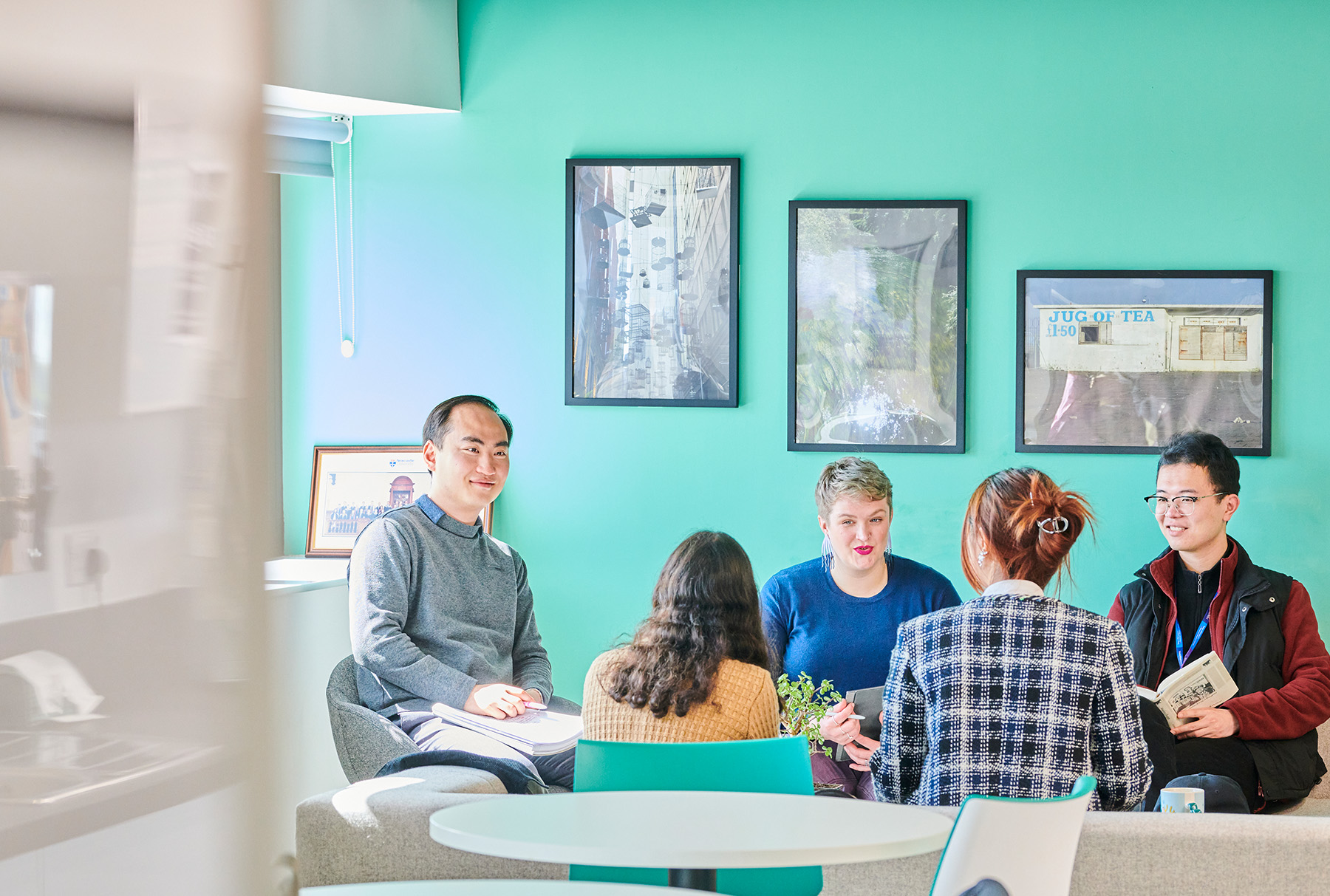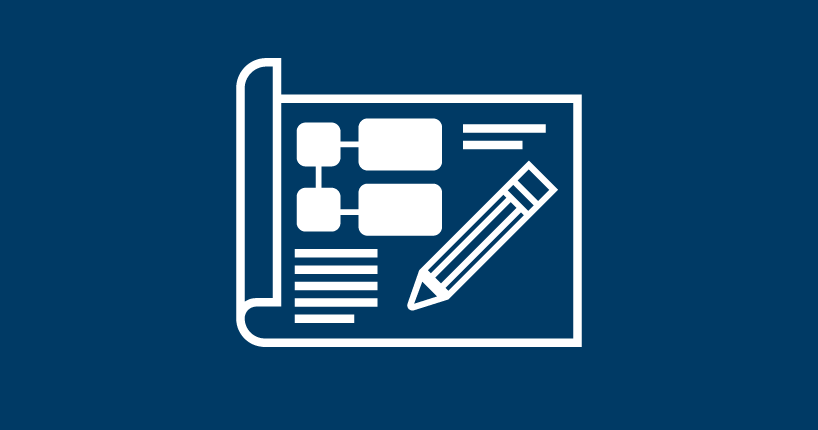Curriculum Discovery
NEW: A vision for education and skills at Newcastle University: Education for Life 2030+
Overview
This section of the Toolkit has been designed to support you to explore the early stages of curriculum review and discovery. It will help you to consider some of the broader requirements of the curriculum and the student experience, whether that be reviewing your current programme, or designing a new and innovative programme or a CPD course. In this section, we have provided guidance and resources on:
- Vision and scoping;
- Stakeholder engagement;
- Curriculum discovery event;
- University policies and the programme approval process.
Vision and scoping
Initiating the vision and scoping process is the first step in creating or redesigning your new programme. It’s important to establish the key drivers influencing programme design and identify factors necessary to ensure alignment with institutional and school objectives, as well as the evolving needs of students.
Gathering this information will be invaluable in shaping the (re)design of your programme. Your School or Faculty Education Team will be able to help you gather all the relevant information.
Practical guide
Gather all the relevant programme-level information and data impacting the (re)design. This might include, for example:
- Monitoring and Review Reflections and programme data.
- For UG programmes - Newcastle Experience Survey and National Student Survey Data (NSS) results and open comments.
- For PGT programmes - Postgraduate Taught Experience Survey (PTES) results and comment.
- Student feedback through student representation.
- Industry feedback.
- Market and Student Recruitment Data.
- Institutional policy and practice for programme design.
- Accreditation requirements.
- QAA Subject Benchmarks.
It is also important to document how and why design decisions have been made so that you can use this information as developments progress, and as rationale for Programme Approval should you need it.
As the core project team, it is good to establish expectations and timescales for review, design, and approval. Your Faculty Education Team will be able to support you with this.
Reflective questions
From the data collected, you might want to reflect on:
- What are the perceived strengths and weaknesses of the current curriculum, and how do they impact student experience and outcomes?
- How does the diversity and inclusivity of the curriculum and teaching methods impact on the student experience?
- How does the alignment between modules and programme outcomes, industry or societal needs, impact on graduate outcomes and employability?
Next steps
You might want to think about creating a Teams space for storing, sharing, and commenting on all of the information you have gathered. We find that being as transparent and inclusive as possible with colleagues in these early stages can help with stakeholder engagement. In addition, you’ll need to share these findings with key stakeholders when you first meet.
In the next section we will look at why stakeholder engagement is important in curriculum (re)design and how you might get various stakeholders involved.
Stakeholder engagement
For your new or improved curriculum to meet the future needs of your students and benefit from the broadest possible expertise, we recommend engaging relevant stakeholders early in the curriculum discovery process. This engagement is crucial as it can:
- Bring diverse perspectives and unique insights into the knowledge, skills, and competencies necessary in your field of study, leading to a more well-rounded and comprehensive curriculum.
- Support the coherence and effectiveness of your programme through alignment with our university's educational vision and strategic goals.
- Ensure that the curriculum remains relevant to the evolving needs and aspirations of your students as the demands of the job market and society continuously change.
- Serve as a quality assurance mechanism, helping you identify and address potential shortcomings or gaps in the curriculum.
- Promote inclusivity and diversity in the curriculum, allowing for the integration of diverse perspectives and cultural considerations, while incorporating underrepresented voices, which is essential for fostering a more inclusive and equitable learning environment.
- Provide a mechanism for staying current with emerging trends, technologies, and pedagogical approaches, ensuring that the curriculum remains forward-looking.
- Lead to increased engagement and support for the curriculum among faculty, students, and other stakeholders, as individuals feel their input is valued and their needs are considered.
Practical guide
To benefit from the broadest possible expertise in programme (re)design, the DPD or key Faculty colleagues should spend some time identifying relevant stakeholders and representatives. The table below will help you to consider the different stakeholders and the possible expertise they could bring to the process. It might be useful to note the level of engagement for each stakeholder. For example, advise, collaborate, or engage, as this will help you determine how and when to connect with them.
Click through the slides below to explore how various stakeholders can be involved in the curriculum (re)design process.
Reflective questions
Based on the data collected, you may want to reflect on the following:
- What barriers to engagement exist among key teaching team members, and how can you facilitate collaboration or fill any gaps in expertise?
- How can you involve different stakeholder groups in programme discovery to align with the objectives of our Education Strategy (Equity, Fit for the Future, and Leading Edge) and meet the needs of future students?
- How can you engage different stakeholder groups in the programme design, development, and approval processes? (Also, see the section below on Links to Policy, QAA, and Programme Approval.)"
Next steps
Now that you have spent time considering stakeholders and their engagement, you might want to create three shared stakeholder channels in your Teams space (e.g. Advise, Engage, Collaborate - see guidance on shared Teams channels). These shared channels mean you don’t have to give everyone access to the whole Teams space, and you can tailor the content to different stakeholder groups. This will make it easier for you to manage as the curriculum develops and it will avoid overburdening colleagues with information they don’t need.
As the core project team, you will now have a good sense of the vision for the programme (re)design, the data shaping the vision, the key stakeholders you need to involve, and how you might do this. Speak to your Faculty Education Team about the support they might be able to provide.
In the next section we will look at why collaboration and discovery are important in programme (re)design, what this might include and how you can get the most out of this event.
Curriculum Discovery Event
The Curriculum Discovery Event provides an opportunity for a comprehensive programme review, facilitating collaborative engagement among all stakeholders. The intricacies involved in designing or redesigning innovative programmes often often require close collaboration with stakeholders. Establishing robust relationships early in the process enables you to leverage diverse expertise and foster the level of cooperation required as you progress from discovery through design to development. Our experience indicates that the core programme team frequently needs to demonstrate agility in managing both relationship-building and design tasks concurrently. We would recommend at least three hours for this event.
For those opting to facilitate this event independently, we provide detailed guidance below. This includes recommendations on content inclusion, session structuring, and suggested activities to maximize the event's effectiveness.
Practical guide
It would be ideal to have everyone at the curriculum discovery event, but that might not be possible. Colleagues could still input by providing feedback relevant to their involvement pre- or post-event. You will also have the core information you gathered through Vision and Scoping, which will help focus discussion at the event. We would recommend at least half a day, with refreshments, for this event.
Activities and resources
Guided activities
- Curriculum Discovery Event - session slides and resources. This Power Point presentation includes all activities recommended in the Curriculum Discovery Event. According to the programme (re)development stage, and previous activities, some tools from this presentation can be omitted. Presentation includes the following activities:
- Stakeholder Introductions and sharing expertise.
- Drivers influencing programme review / redesign.
- Student personas, profiling perspective students.
- Understanding your unique selling points (USPs).
- Do / Be Activity.
- Introduction to the Design Space.
- Must / Should / Could.
- Strengths and Weaknesses.
- Timeline and Next Steps.
- Course values: activity slides. This activity helps to identify key values important to the programme team.
- Writing programme level aims - activity slides. Giving colleagues the opportunity to review current aims or discuss new aims and graduate outputs supports teaching teams to develop a shared vision and ownership of the programme and to understand how what they teach contributes to the overall aim.
- Skills Development Diamond - this activity is designed to facilitate discussion on programme level skills and competencies.
Reflective questions
In preparation for the curriculum discovery event, you might want to reflect on the following:
- How can we involve students and alumni in shaping the curriculum to ensure it promotes diversity, equity, and inclusion?
- What are the long-term goals for our curriculum, and how can we ensure its sustainability and evolution?
- What challenges or potential weaknesses should we be aware of, and how can we address them?
Next steps
Allocate someone from the core project team to write up the output from the event and add the details to the Teams space. You could start to think about populating the programme specification and invite relevant colleagues to comment and contribute to developments.
Also, see the section below on Links to Policy, QAA, and Programme Approval.
University policies and the programme approval process
When designing or redesigning your programme, you have to ensure that the programme is aligned with sector-wide standards.
As a university we have policies, procedure and guidelines to ensure that all our programmes meet and maintain these standards, that we assurance the quality of our programmes, and meet our regulatory requirements.
These are informed by sector-wider guidance including the QAA UK Quality Code for Higher Education (Quality Code).
Practical guide
The University's policies for the approval of new programmes and programme changes will guide you through the processes for programme approval and programme changes. The guidance and activities in the toolkit and their outputs will help you with the documentation needed for the approval process.
In our experience, collaborating with your key stakeholders offers a sense of robustness and legitimacy to the process, along with a sense of shared responsibility. There is a depth of curriculum design work that can be achieved with programme approval happening in parallel, and many of the activities in the toolkit can support of the development of the required documentation.
How this Toolkit supports you through the Programme Approval process
Once you have completed the activities in the Discovery section, you should have sufficient input for the Strategic Approval Form. Some activities (e.g. writing programme-level aims) can also inform the Academic Case.
Activities and resources
Additional resources
- Our programme approval checklist is designed to assist you in preparing for program approval and considering the necessary resources.

